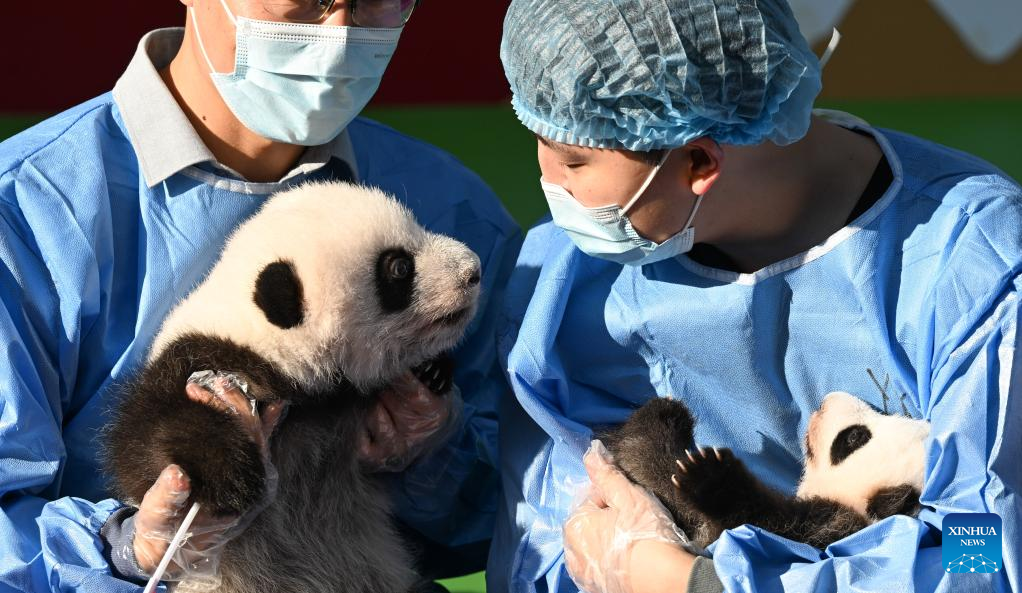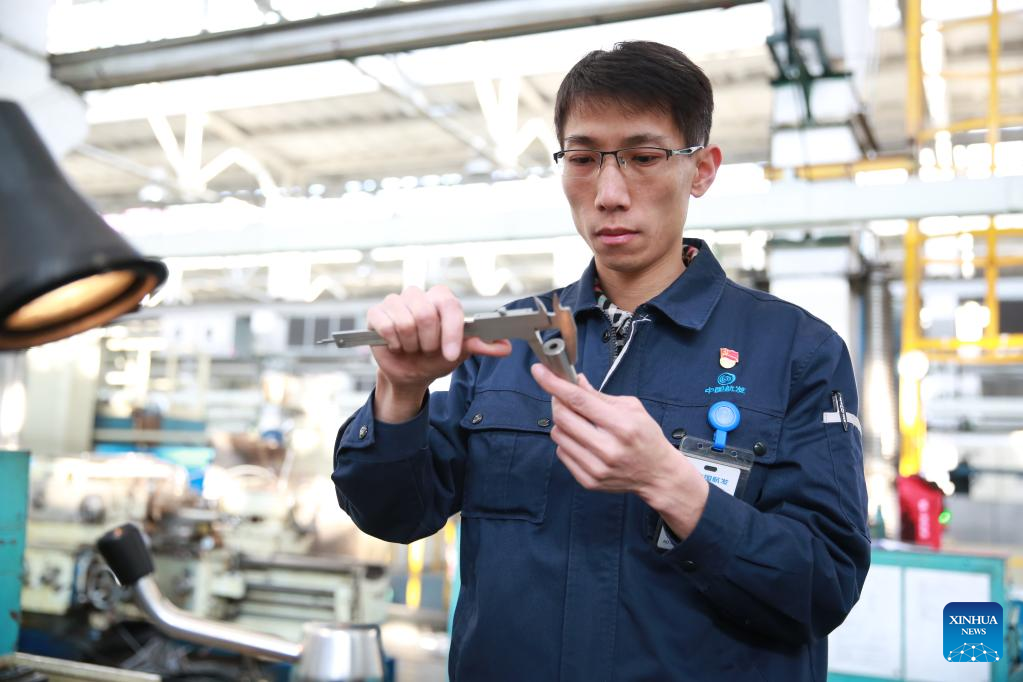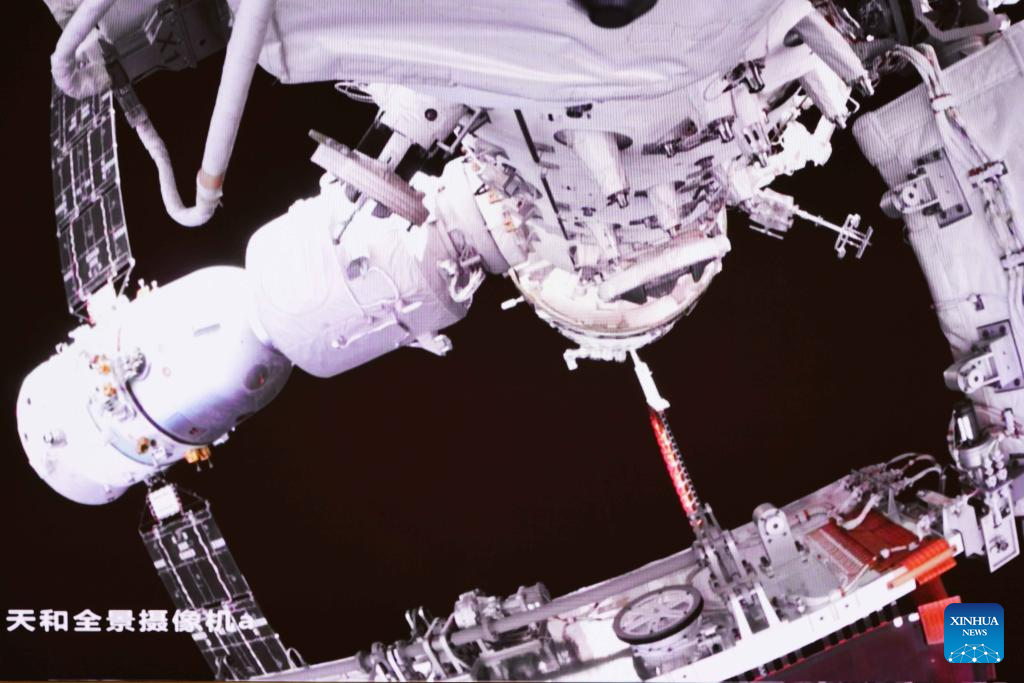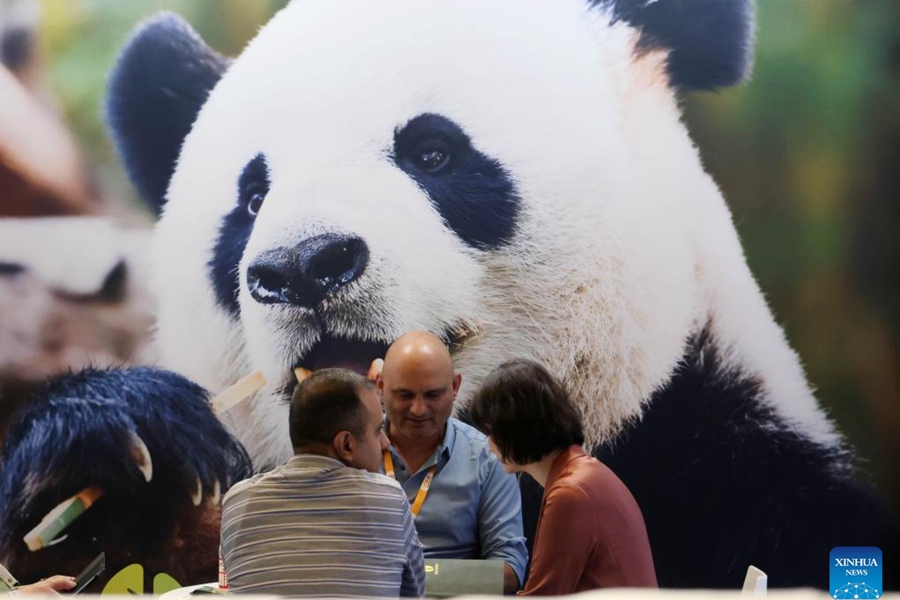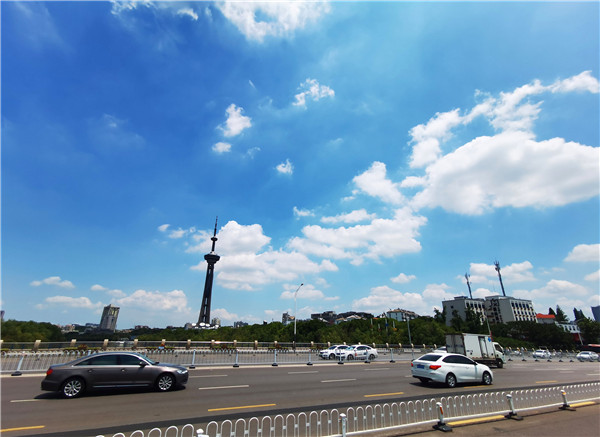
(CFP Photo)
Jiangsu Province reported record-low average PM2.5 density in 2022, marking a 9-year straight decline since the data was first collected in 2013, according to a government report on environment protection efforts.
The report, delivered at the second session of the Standing Committee of the 14th Jiangsu Provincial People's Congress on March 29, showed the percentage of days with good air quality reached 79% last year.
Compared with 2021, the concentration of PM2.5, a main gauge of air pollution, decreased by 3.0% to 31.5 micrograms per cubic meter, while PM10 and nitrogen dioxide dropped by 7.0% and 13.8%, respectively. The ozone concentration increased by 6.1% in the province.
In reviewing the work since 2018, the report noted while Jiangsu's GDP increased by one trillion yuan each in three of the five years, the PM2.5 concentration decreased by 31.9%, and the proportion of days with good air quality increased by 4.6 percentage points, with its ambient air quality meeting the national standards Grade II for two consecutive years.
Amid efforts to strengthen ecological protection and restoration, Jiangsu's forest coverage and natural wetland protection rates reached 24.06% and 64.3%, respectively.
The province also released a red list of threatened species to improve biodiversity, and a list of indicator species that can reflect environmental conditions. Jiangsu recorded 6,903 animal and plant species in 2022, with 857 species newly added compared with 2021, and the populations of some endangered bird species were also the highest in the world.
In addition, Jiangsu has been improving its regional laws and regulations to protect the environment. It became the first in China to roll out a planning for ecological and environmental infrastructure construction during the 14th Five-Year period. In total, the province carried out 894 key projects to protect the environment with an investment of 86 billion yuan in 2022.
To accelerate the industrial structural transformation, Jiangsu vetoed and phased out more than 100 projects that featured heavy pollution and high energy consumption, and shut down 165 chemical companies too.
Meanwhile, the output value of enterprises above designated size in strategic emerging industries and high-tech industries accounted for 40.8% and 48.5% of the total, respectively.
Among the main environmental protection goals in 2023, Jiangsu aims to control the PM2.5 concentration at around 32 micrograms per cubic meter and ensure that 80% of the days have good air quality.


